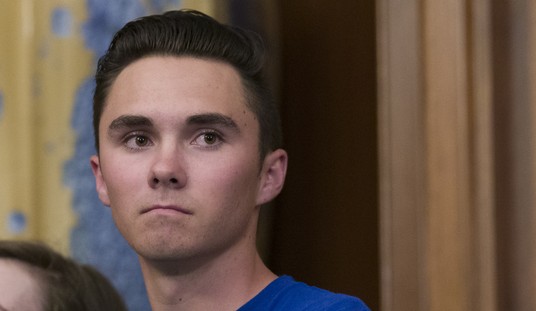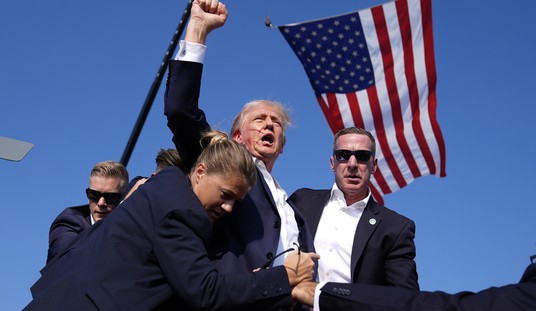If you think that it is outrageous that Democratic presidential candidates want to eliminate the southern border and that Congresswoman Alexandria Ocasio-Cortez calls our detention facilities there “concentration camps,” then you haven’t been reading and believing Howard Zinn’s best-selling A People’s History of the United States.
But if you have been taught by a teacher who is one of the 84,000 (as of September 2018) who have downloaded lessons from the Zinn Education Project, you will get a lesson that reproduces Chapter Eight, “We Take Nothing by Conquest, Thank God,” that begins, “Today’s border with Mexico is the product of invasion and war.” Zinn claims that the entire Southwest is ill-gotten and by a country that is based on a “pretense”–“that there really is such a thing as ‘the United States,’” one with the “national interest” “represented in the Constitution, in territorial expansion, in the laws passed by Congress, the decisions of the courts, the development of capitalism, the culture of education and the mass media.” The Antifa chant, “No Trump, no wall, no U.S.A. at all!” sums it up. Recently, would-be (now-deceased) Antifa bomber Willem Van Spronsen left behind a manifesto decrying the “concentration camps” and offering as proof Zinn’s book.
Ocasio-Cortez is simply extending the Zinn-inspired school lesson about another period in history, when camps housed Japanese-Americans during World War II.
At the ZEP site teachers can find multiple lessons featuring role-play, a film, and reading material referring to the internment camps as “concentration camps.” Much of the material in the lesson on Fred Korematsu, who refused to be “incarcerated in U.S. concentration camps,” comes from the Korematsu Institute and the 2001 PBS film Of Civil Rights and Wrongs about the ACLU-inspired suit against the government, which went to the Supreme Court in 1944. Although Korematsu lost, in 1983 his conviction was overturned, thanks to Peter Irons, who became acquainted Zinn’s writing while in prison for draft evasion during the Vietnam War. The two corresponded and through Zinn’s influence, Irons was admitted with a full scholarship to Boston University, where Zinn was teaching. After completing his doctorate, Irons, along with Zinn, helped Daniel Ellsberg in his case involving the stolen Pentagon Papers. After law school, Irons became an activist, lawyer, professor, and author of A People’s History of the Supreme Court, one of the dozens of spin-off books for which Zinn received a percentage of the royalties.
The manufactured border crisis is being exploited by Democratic politicians and others. Public radio station KUOW recently interviewed Tom Ikeda, a former businessman and scientist and founding executive director of Densho, a non-profit dedicated to preserving the history of the Japanese internment. It was titled “Haunting symbolism: Migrant children are being held where Japanese-Americans were detained.” Indeed, Ikeda sees President Trump reenacting the policies of World War II, when people of Japanese ancestry were put in what the website calls “concentration camps.” Ikeda claims that “most of the country didn’t know it was happening.”
Actually, in 1942, you might not have known about the detentions if you never read a newspaper, went to the movies, talked to people who did, or in other ways stayed under the proverbial “rock,” as I demonstrate in my book debunking Zinn’s claims. Zinn writes that the United States came “close to direct duplication of Fascism. This was in its treatment of the Japanese-Americans living on the West Coast.” In a chillingly “calm” way FDR “signed Executive Order 9066, in February 1942, giving the army the power, without warrants or indictments or hearings, to arrest every Japanese-American on the West Coast—110,000 men, women, and children—to take them from their homes, transport them to camps far into the interior, and keep them there under prison conditions.” Furthermore, according to Zinn, “the story of the Japanese-Americans” was not “known to the general public” until the “month the war ended in Asia, September 1945.” And that was largely because “an article appeared in Harper’s Magazine by Yale Law Professor Eugene V. Rostow, calling the Japanese evacuation “our worst wartime mistake.” Zinn then asks, “Was it a ‘mistake’—or was it an action to be expected from a nation with a long history of racism and which was fighting a war, not to end racism, but to retain the fundamental elements of the American system?”
It’s surprising that when Zinn’s book first came out in 1980 that there wasn’t a groundswell of opposition by those who had lived through World War II and remembered watching Milton Eisenhower narrating a film shown in movie theaters about the internments or reading daily newspaper accounts after Pearl Harbor about the arrests of Japanese suspected of engaging in illegal activity (along with supporters of Italian and German fascism), and then about the discussion about the order, the signing of the order, the construction of the camps, and the safe and orderly transit to them.
Zinn wanted readers to believe that the American government acted like the Nazis, shipping off certain ethnic groups in the dead of night to prison camps far into “the interior.”
Actually, Howard Zinn, who was a young man when this was taking place, could have read an article published in the September 1942 Harper’s, the same magazine from which he quoted in order to claim that internments were finally made “known to the public” in 1945. In June 1942, journalist Carey McWilliams visited the camp at the racetrack in Santa Ana—in the Los Angeles area. McWilliams reported that the camp housing 18,562 had “almost everything that any California city of comparable size would have: newspaper, hospital, police and fire departments, recreational centers, stores, ball parks, workshops, and libraries”—and “a flourishing post of the American Legion.” The food was good and ample, and the kitchens were clean. To counter a meme that evidently was already in circulation, he stated, “It would certainly not be accurate to characterize Santa Anita as a ‘concentration camp.’”
In fact, there are Japanese-Americans who recall stories from relatives. One, political science professor, Ken Masugi, confirms McWilliams’ description. He tells about family members who chose to leave the camps (not prisons) for jobs and school in Chicago. He also stated in his article, “Any honest study of the relocation or WWII will discuss the Niihau episode” which took place only hours after the attack on Pearl Harbor and on the remote Hawaiian island of the name where a Japanese fighter-bomber landed. The American-born Japanese farmer and his wife, brought to the scene by native Hawaiian Hawila Kaleohano as interpreters, decided to help the pilot and claim “the island for the Emperor.” Both the pilot and farmer were killed in the fight that ensued. The incident was publicized in the Roberts Commission Report the following month.
The author of the 1945 article cited by Zinn, Eugene V. Rostow–a hawkish Democrat who served under Presidents Roosevelt, Johnson, and Reagan–along with FBI Director J. Edgar Hoover, Republican Senator Robert Taft, and conservative African American journalist George Schuyler, opposed the internments.
Zinn’s goal, however, was to present the internments as an undercover right-wing conspiracy and himself as the heroic expositor.
Congresswoman Ocasio-Cortez, educated like most millennials to see all internments on American soil as equivalent to Nazi concentration camps, utters “never again” without any apparent historical awareness. Her fist-thumping is the well-rehearsed gesture of the millennial social justice warrior boosted in self-esteem and educated in Zinn-inspired role-play lessons. Her degree in economics from Boston University did little good and much harm, as her ignorance about economics and government demonstrates.
But as one interviewee who attended BU from 2006 to 2008, told me, Howard Zinn, though retired from teaching, was still “idolized” on that campus.
Howard Zinn repeatedly said that “real learning takes place outside the classroom.” He meant the street protest and the jail cell. He has been dead for nearly a decade, but his work is coming to fruition in violent street protests and in the halls of Congress.









Join the conversation as a VIP Member